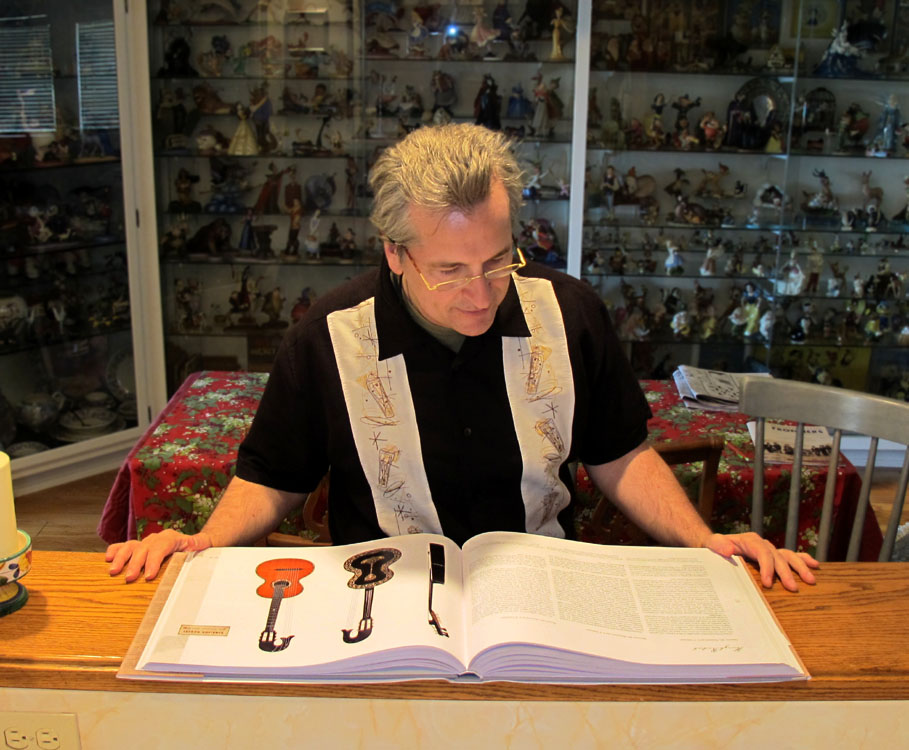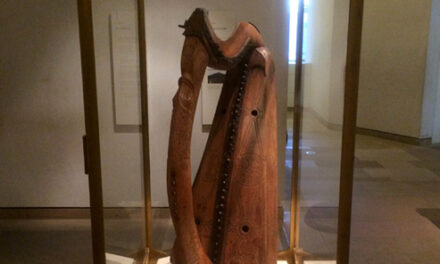
I’ve been meaning to write about this for some time, but it took a while to finish the new Stauffer & Co. book. Not so much reading it, but absorbing it.
Lots to digest here – so many new instruments and information!
Copies are available direct from Stauffer & Co., and now in the States from Elderly.com. For those who seem to balk over the hefty price, rest assured that you get your money’s worth in this high-quality 12” x 15” (and 1-3/8” thick) full-color hardback. As you can see, I had to clear significant counter space to read it!

Production values and the authors’ “labor of love” aside, the information alone is priceless. Exhaustively researched, there will be many new surprises for Early Romantic Guitar instrument and music scholars and aficionados. Some of the surprises turn previous convention on its ear – for example, several regarding the development of the Schrammelgitarre. There is much to absorb here on the subject of harp guitars (a term the authors don’t use in the book, not unsurprisingly). There are a plethora of new specimens and countless references to historical and surviving instruments. But most importantly, a clearer picture of the natural evolution and musical justification and use (though as “niche” as today) of these ubiquitous, but still misunderstood, floating-string instruments. The whole Viennese guitar tradition (explosion) is very well described for those of us who grew up on Gibson and Fender electric guitars and their players.
I’m most interested in the tantalizing footnotes and what Erik left out of the book (I’ll be blogging shortly about one of them). Meanwhile, he’s generously given permission for me to post anything from the book in the various Harpguitars.net Galleries, etc., but it will be some time, I’m sure (remember, I still haven’t tackled the surprising amount of images and information in the Padovec book chapter by Alex Timmerman).
I haven’t mentioned the “normal” 6-string guitars in the book and leave that to other mainstream reviewers. Even though I had a hint of what was coming, I was amazed (and delighted) by the ratio of “bass guitars” to 6-string guitars in the book. I can only hope that it continues to hammer home the importance and interest these “early harp guitars” had then, and perhaps should again have now. Hopefully, the excellent new “must own” Stauffer & Co. book will further inspire the growing number of serious researchers and performers of these instruments, along with the all-too-occasional modern music player of kontragitarres and similar forgotten instruments.





